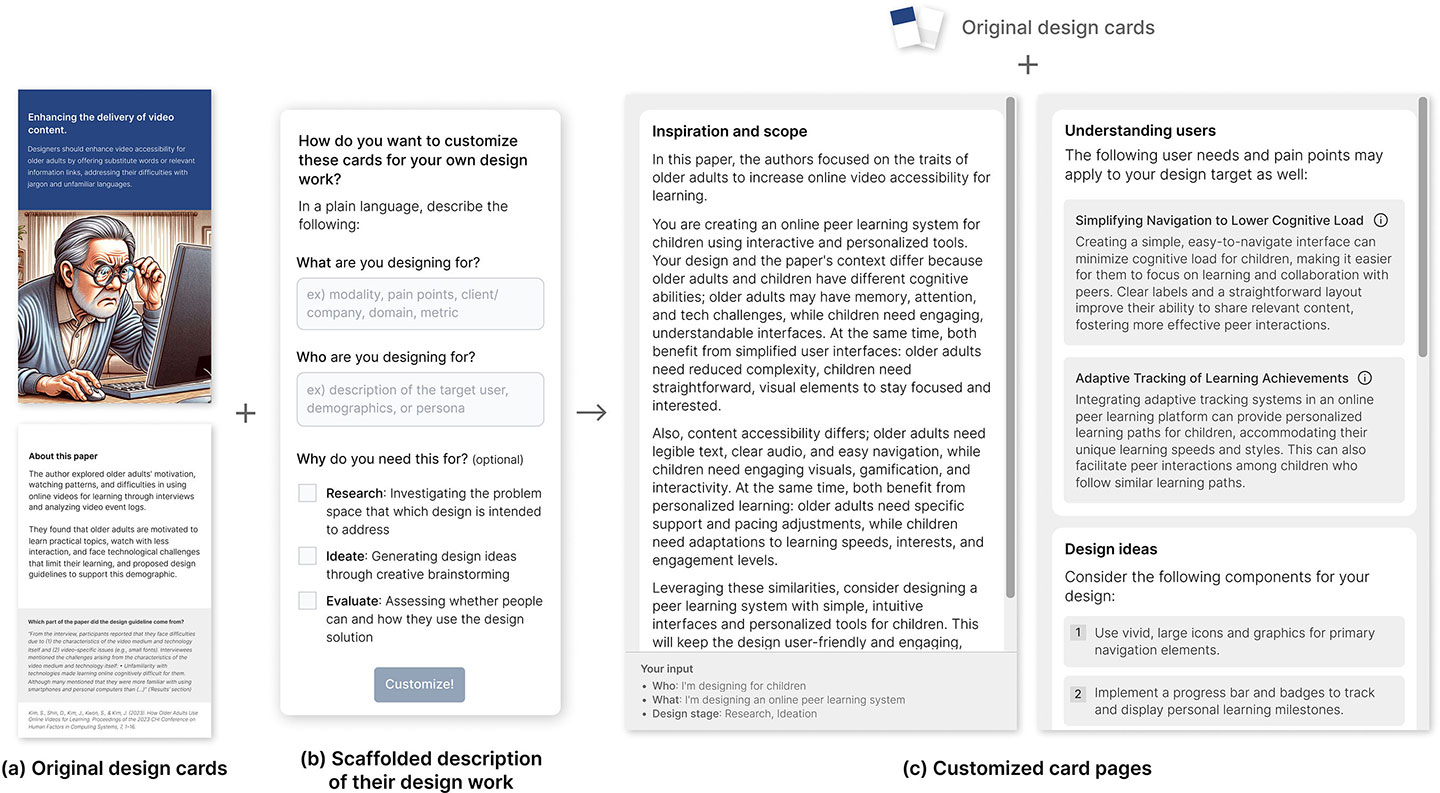What About My Design Context?: Exploring the Use of Generative AI to Support Customization of Translational Research Artifacts
Published in DIS 2025.

Abstract
Despite the wealth of knowledge in research papers, practitioners struggle to apply research results to their work due to significant gaps between research and practice. This study addresses the rigor-relevance paradox, where academic rigor can undermine the practical relevance of research for designers. Specifically, we explore the potential of large language models (LLMs) to customize translational research artifacts (i.e., design cards) and improve relevance to specific designers’ needs. In our preliminary study with designers (N=15), participants defined relevance as alignment between the content of the translational artifact and their design context—which includes target users, modalities/domains, and specific design stages. Based on these findings, we implemented a pipeline that allows designers to customize research papers into design cards tailored to their contexts using LLMs. Our evaluation (N=20) demonstrated that designers perceived customized artifacts as more relevant, actionable, valid, generative, and inspiring than those without customization—even for papers that are less topically related—indicating LLM-powered customization can be used to support research translation.
Materials